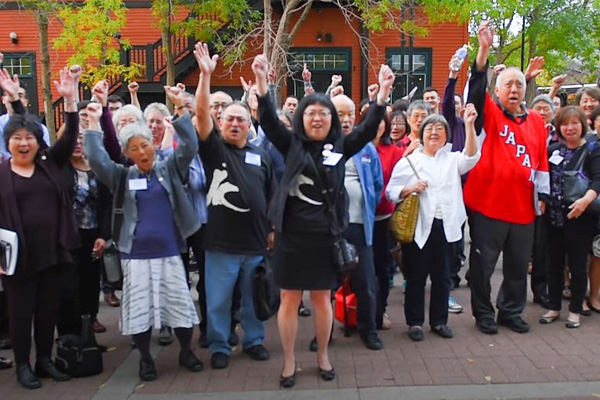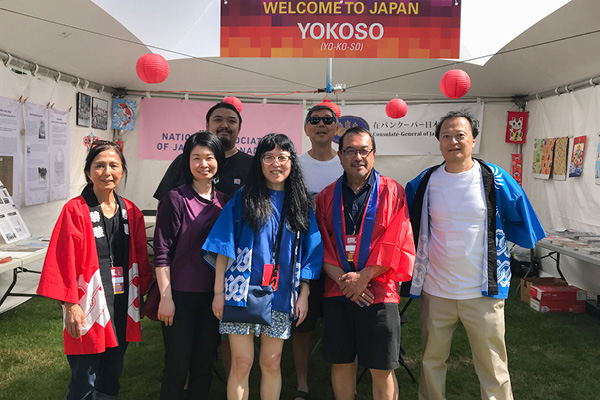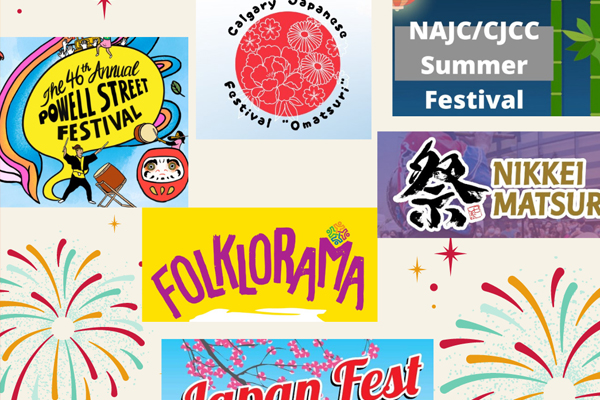 I believe that the most important aspect of teaching – once the content is mastered – is how to deliver the package of historical information in an engaging and relevant manner to high school students within a set class time. The daily half-hour drive to school was the time that I used to refine my approach so that it would align to the exceptionalities and dynamics that exist in each class.
I believe that the most important aspect of teaching – once the content is mastered – is how to deliver the package of historical information in an engaging and relevant manner to high school students within a set class time. The daily half-hour drive to school was the time that I used to refine my approach so that it would align to the exceptionalities and dynamics that exist in each class.
Based on my involvement with our Nikkei community and raising two yonsei sons; I have learned that the opportunities to engage and teach the next generation is fleeting at best. The challenge is to determine what will engage youth for any meaningful length of time that will help to sustain and enhance our community. We need to capture their energy and ideas. Perhaps it is analogous to fishing – a lot of casting for very few nibbles. We need to find ways to empower them to so that they can organize projects which appeal to them.
How do we deliver Nikkei historical information in an engaging and creative manner? One vehicle might be the Japanese manga genre – although it must be noted that not all youth are drawn to it. The current manga project out of Toronto, Nikkei Manga-gatari, will allow accessibility of the three generations of Nikkei history and culture in an engaging visual format. The inspiration for this project was the immensely popular 1983 manga titled Oishinbo that dealt with Japanese food and cooking. Written by Tetsu Kariya and drawn by manga artist, Akira Hanasaki, it has sold over 100 million copies worldwide. On the surface, the manga is about the exploits of newspaper writers trying to track down the ‘ultimate menu’ that reflects the best in Japanese cuisine. Each volume focuses on an essential ingredient and gives the reader detailed social, cultural and historical information.
As Terry Watada, the author of Nikkei Manga-gatari notes: “Each story will illuminate the humanity of each Japanese Canadian generation. The Issei story follows a Nikkei soldier of World War I through his exploits before, during and after the battle of Vimy Ridge. The Nisei story looks at the lead-up to WWII and the internment experience. TheSansei story looks at a sansei’s discovery of his past and its implications for his life.”
As a talented writer, Terry was able to put the manga stories together in a relatively short period of time. The bigger challenge was finding a Japanese Canadian artist willing to take on the task – ideally a yonsei artist who would use this opportunity to learn more about our community’s legacy. After almost a year, we were fortunate to have yonsei Kenji Iwata, a talented animation artist from Brampton, Ontario to illustrate the Issei story. Here is his comment on the project as it nears completion:
“I am a yonsei Japanese Canadian born to sansei parents. I currently work as a freelance illustrator. Prior to working on the manga, I had almost no involvement to the JC community. This was mainly because the city I was in had little JC presence. With community gatherings being limited to family reunions, I did not find myself as involved with Japanese Canadians as much as I would have liked.
“In order to better understand the manga I have done an extensive amount of research. Going through countless documents and photos, ranging from the early 1900’s to the internment camps of World War II, the hardships faced by the Japanese Canadians really changed the way I see the community. I have found a strong admiration for the Japanese Canadians who have rebuilt their lives after having their livelihood taken away. When I look and see how the community has grown so much over the decades since, I see a community of remarkable determination.”
Nikkei Manga-gatari is a joint project of Toronto NAJC, NAJC Heritage Committee and the Hastings Park Foundation. We hope to have a limited release of the Issei book by the end of May and available for general distribution in early September – in time for the NAJC annual general meeting in Toronto. Detailed information will be posted in future issues of The Bulletin. In the meantime, please enjoy a sample page appearing in this month’s issue.
I would like to extend my thanks to Terry and Kenji for their time, energy and enthusiasm.
Community Development Fund – deadline
This is a reminder to presidents of our member organizations that the deadline for submitting your grant proposal must be submitted to the National office by June 15th.



